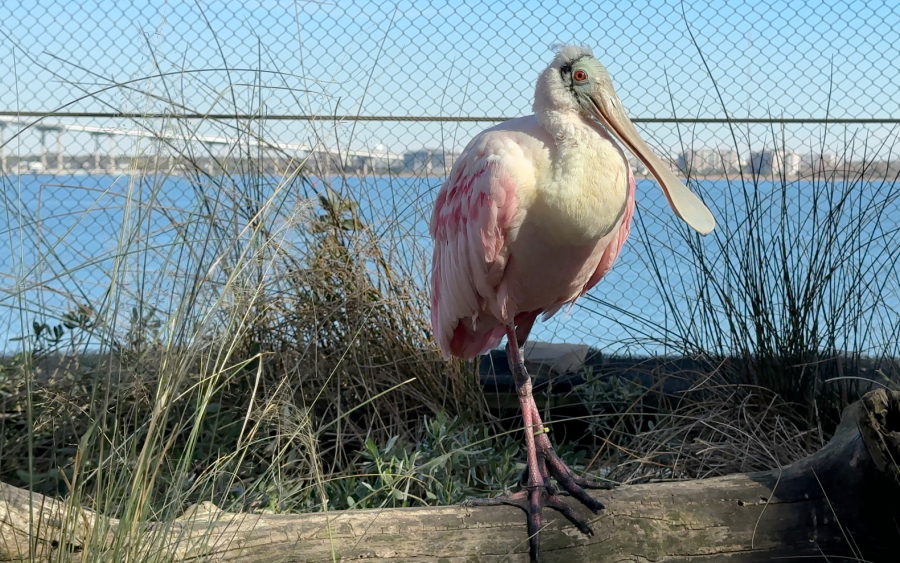“Look at that flamingo! Wait… is that a flamingo?” Have you ever had an experience like this while at the Aquarium? It’s more common than you think! Some of our fan-favorite species can be easily confused for similar counterparts in the animal kingdom. So put on your detective cap — it’s time to solve a case of mistaken identity! We’re here to help you pick out the clues needed to correctly name some amazing creatures found throughout South Carolina. Read on to gather the evidence!
Cownose Ray vs. Giant Manta Ray
If you’ve visited the South Carolina Aquarium, you’ve likely had the chance to touch a stingray! In The Shallows, you’ll find plenty of energetic and unique rays. While some may think of the name “manta ray” when imagining these playful creatures at sea, the ones that reside here are a completely different species, cownose ray!
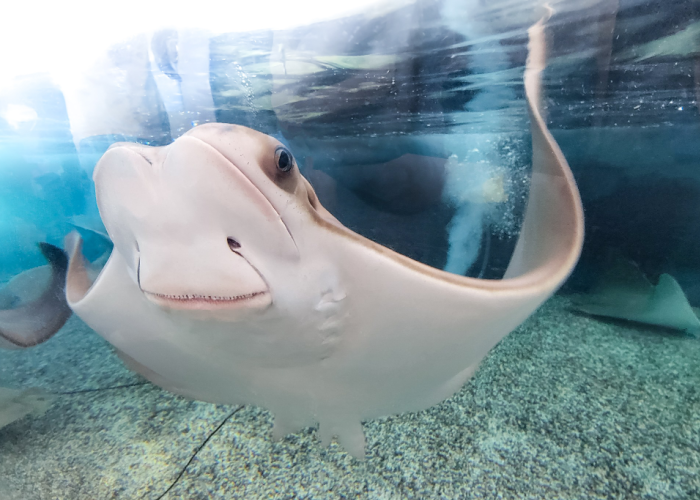 Cownose Ray, Rhinoptera bonasus
Cownose Ray, Rhinoptera bonasus- Size: up to 45-inch wingspan, up to 50 pounds
- Distinguishing Feature: two lobes on its head resembling a cow’s nose
- Defense: venomous spine, though not threatening to humans
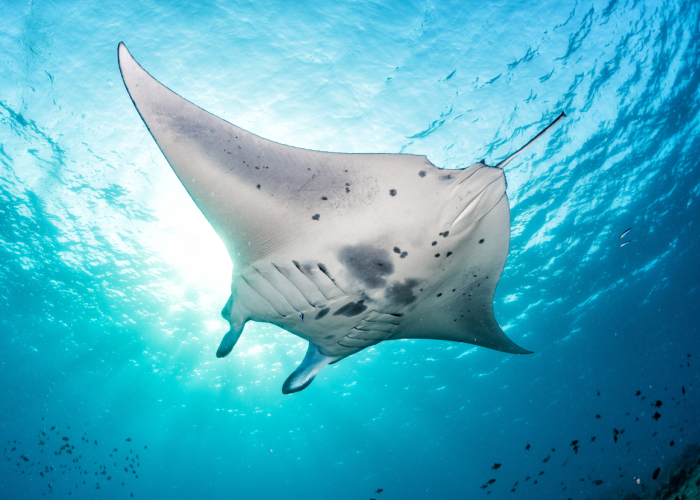 Giant Manta Ray, Mobula birostris
Giant Manta Ray, Mobula birostris- Size: up to 29-foot wingspan, up to 5,300 pounds
- Distinguishing Feature: horn-shaped cephalic fins extending from head
- Defense: large size is a deterrent, as well as fast swimming (no venom or barb)
Additional Suspects: Did you know we have even more species of stingray in the Aquarium? See if you can spot southern stingrays (Hypanus americanus) in The Shallows swimming alongside our cownose rays and Atlantic stingrays (Daysyatis sabina) in the Touch Tank with our chain dogfish!
American Alligator vs. American Crocodile
When journeying through our Coastal Plain gallery, you’ll spot a pair of ruthless reptiles — you may have even met one up close during an animal encounter! You may think these scaly apex predators deserve a spot on your Most Wanted list, but be sure your BOLO, or “be on the lookout,” is for the American alligator, not the American crocodile! Both have an average lifespan of 50 years and can go months without a full meal, so let’s find out what makes alligators just as unique and special as crocodiles.
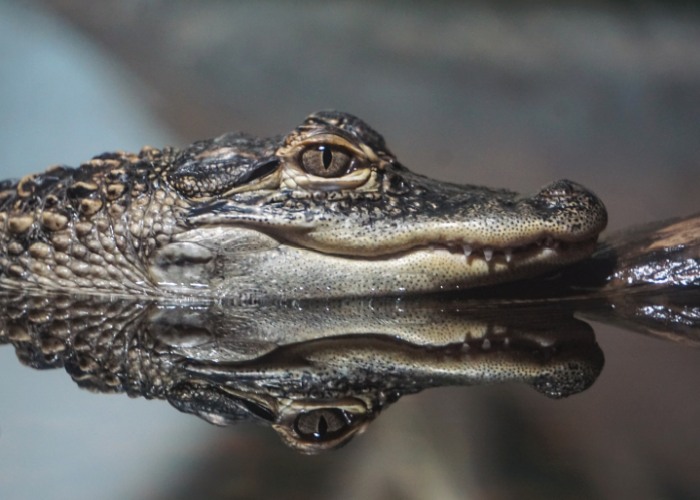 American Alligator, Alligator mississippiensis
American Alligator, Alligator mississippiensis- Size: up to 15 feet long, up to 1,000 pounds
- Anatomy: wider u-shaped snout and webbed feet
- Habitat: freshwater like rivers, swamps and marshes
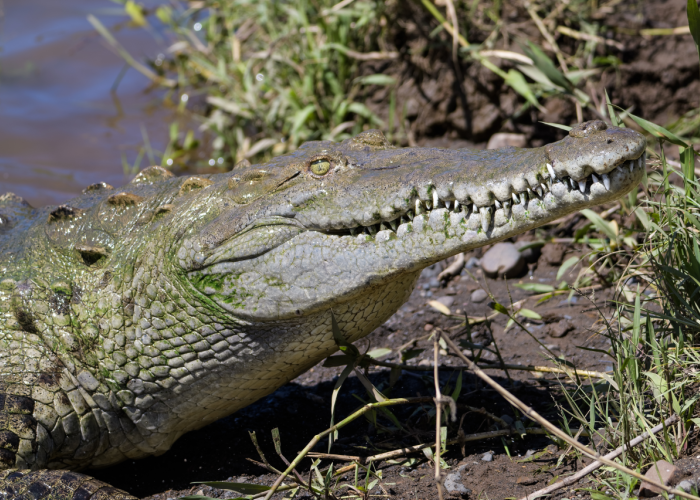 American Crocodile, Crocodylus acutus
American Crocodile, Crocodylus acutus- Size: up to 20 feet long, up to 2,000 pounds
- Anatomy: narrower v-shaped snout and non-webbed feet
- Habitat: found in areas with more salinity, like brackish waters of lakes, mangroves and lagoons
Roseate Spoonbill vs. Greater Flamingo
As you walk through our Saltmarsh Aviary, you’ll perhaps notice a point of pink plumage in your field of view. When we think of blush-hued birds, our minds tend to imagine flamingos, but these lovely ladies (aptly named Coral and Pearl) are actually a completely different species: roseate spoonbills! While these two species do have some things in common, like their trademark rosy feathers and using their bills to gather food, there are differences you can learn so you can be confident in identifying them in the future!
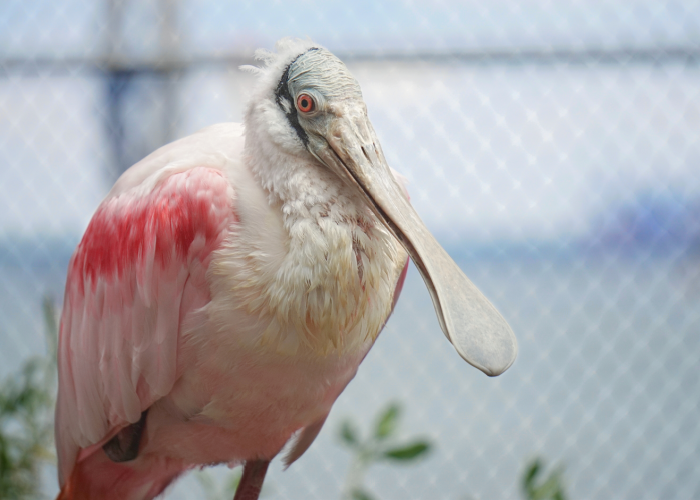 Roseate Spoonbill, Platalea ajaja
Roseate Spoonbill, Platalea ajaja- Size: up to 32 inches, up to three pounds
- Beak: elongated beak with distinct spoon shape
- Feeding: “sweeps” side to side in shallow water to feel prey
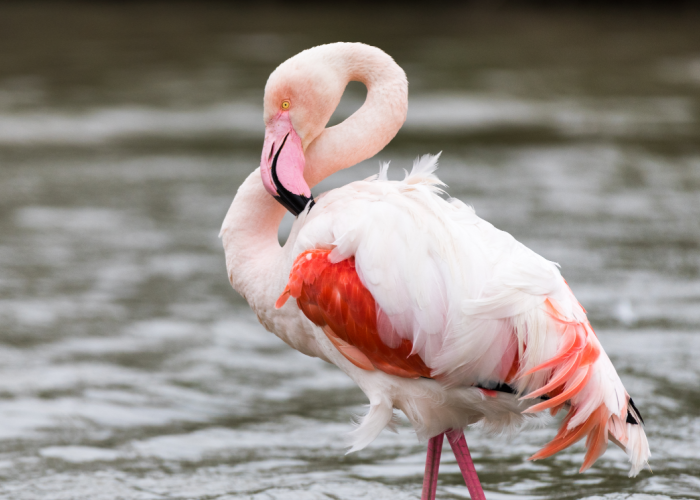 Greater Flamingo, Phoenicopterus roseus
Greater Flamingo, Phoenicopterus roseus- Size: up to 50 inches, up to nine pounds
- Beak: thick and curved beak with large lower bill
- Feeding: filter feeds with head upside down under water
Porcupinefish vs. Pufferfish
If you’ve visited the South Carolina Aquarium, you’ve likely had the chance to touch a stingray! In The Shallows, you’ll find plenty of energetic and unique rays. While some may think of the name “manta ray” when imagining these playful creatures at sea, the ones that reside here are a completely different species, cownose ray!
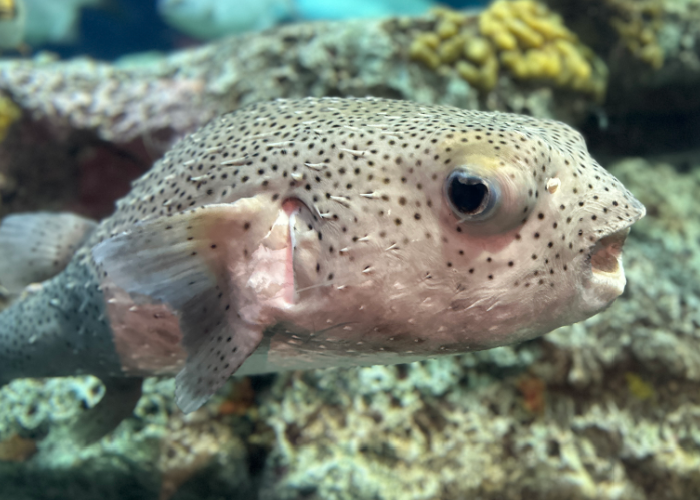 Porcupinefish, Diodon hystrix
Porcupinefish, Diodon hystrix- Size: up to 36 inches in length
- Puffed Up: external spines that lay flat unless “puffed up”
- Teeth: upper and lower teeth fuse together to form upper and lower plates
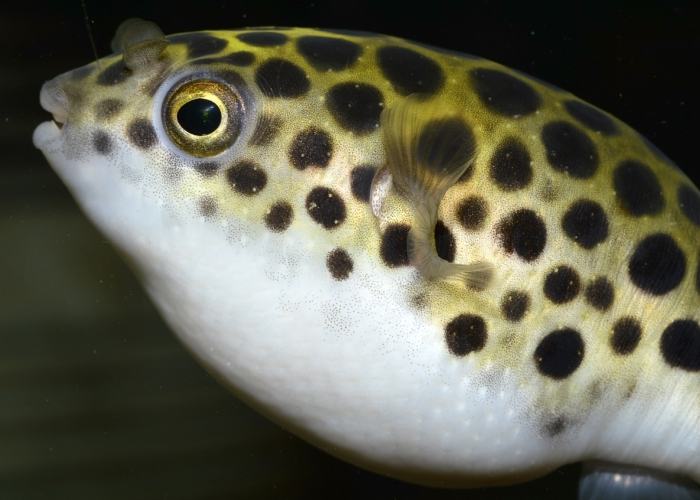 Pufferfish (multiple species), Tetraodontidae spp.
Pufferfish (multiple species), Tetraodontidae spp.- Size: small to medium, up to 20 inches in length
- Puffed Up: internal spines are only visible when “puffed up”
- Teeth: four teeth fuse together to form a beak-like structure
Additional Suspects: Be on the search for more lookalikes throughout the Aquarium! See striped burrfish (Chilomycterus schoepfi) in our Saltmarsh Aviary and long-spined porcupinefish (Diodon holocanthus) in Carolina Seas and Rocky Reef. Both of these species are also members of the Diodontidae family, making them related to porcupinefish!
Green Moray Eel vs. Electric Eel
Have you noticed the green sea creature in our Great Ocean Tank that moves like a ribbon through the water or “stands” straight up near the bottom? It’s common for visitors to guess “electric eel” when first identifying this elusive creature, but they’re actually a green moray eel! While electric eels, like green morays, have long, wormlike bodies, absent pelvic fins and are nocturnal, they are actually not “true” eels, but knifefish. Let’s explore some more key differences.
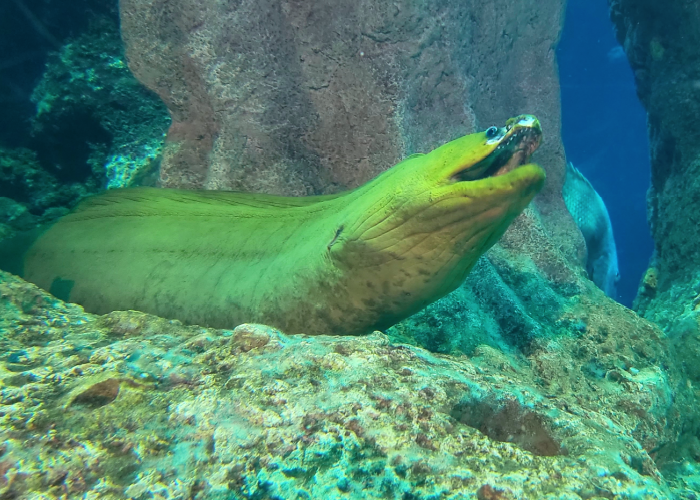 Green Moray Eel, Gymnothorax funebris
Green Moray Eel, Gymnothorax funebris- Size: up to eight feet long, up to 65 pounds
- Hunting: a strong sense of smell notifies the eel when prey swims by
- Breathing: rhythmic opening and closing of the mouth to take in water
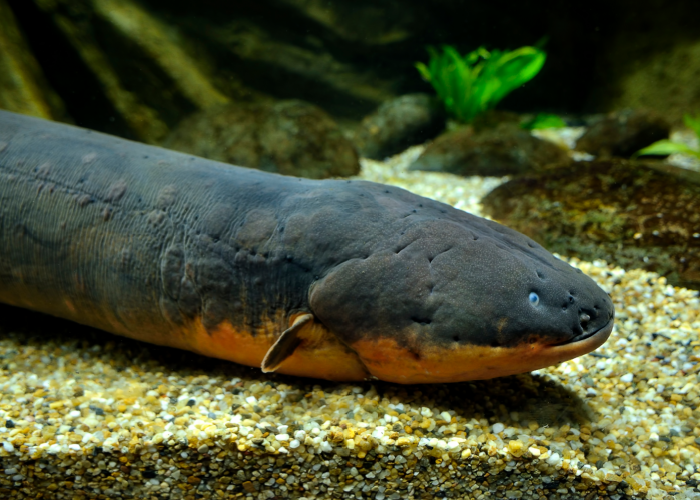 Electric Eel, Elctrophorus electricus
Electric Eel, Elctrophorus electricus- Size: up to eight feet long, up to 45 pounds
- Hunting: electric charges can emit via pulsing of electric organs
- Breathing: must surface to breathe air
Additional Suspects: Did you know we have even more species of stingray in the Aquarium? See if you can spot southern stingrays (Hypanus americanus) in The Shallows swimming alongside our cownose rays and Atlantic stingrays (Daysyatis sabina) in the Touch Tank with our chain dogfish!
Published February 1, 2023


